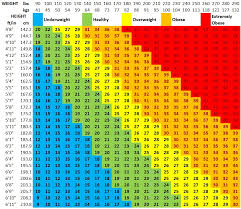What is the full form of BMI?
-
What is the full form of BMI?
-
The full form of BMI is Body Mass Index. It is the technique to measure obese, overweight, normal weight and underweight. It is a value derived from the mass (weight) and the height of an individual. The BMI might be utilizing a table or diagram which shows BMI as a component of mass and tallness utilizing shape lines or shadings for various BMI classes, and which may utilize different units of estimation.
How to calculate BMI?
The two basis parameter to calculate BMI is the height of an induvial in meter and weight in kg.
BMI formula
If the height and weight of the induvial are given in inches and pounds, then BMI can be determined by using the given below formula.
BMI = Weight (in pounds)/Height (In inches)2 ? 703
703 is a conversion factor.
If the height and weight of the person are given in meters and kilogram then BMI can be determined using the given below formula.
BMI = Weight (kg)/Height (m)2
Example of BMI
If the person with a height of 169cm and weight 54kg then BMI can be calculated using the formula
Example: Weight = 54 kg, Height = 169cm (1.69 m)
Calculation: 54 ÷ (1.69x 1.69) = 18.91
BMI= 18.91
Weight status=Normal weight
Application of BMI
During the 1830s, Lambert Adolphe Jacques Quetelet, a Belgian mathematician, built up the BMI. It is also known as the Quetelet index.
BMI Provide the overall health status of the individual, it measures individuals are underweight, overweight, or obese and risk of developing a chronic disease like high BP, heart disease, gallbladder stone diabetes-type 2, osteoarthritis.
Categories of BMI
The category of BMI depends on value obtain after BMI calculation
1. The value of BMI is less than 18.5, then the individual comes underweight category.
2. The value of BMI is between 18.5 to 24.9, then the individual comes under the normal category.
3. The value of BMI is between 25 to 29.9, then the individual comes under the overweight category.
4. The value of BMI is between 30 to 34.9, then the individual comes under the obesity category.
5. The value of BMI is between 35 to 39.9, then the individual comes under the severely obese category.
6. The value of BMI is more than 40, then the individual comes under the morbid obesity category.





